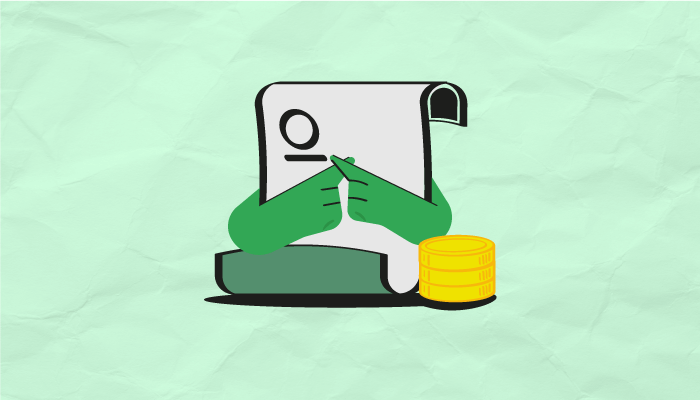- HOME
- Invoicing operations
- 10 common invoicing mistakes to avoid: A business owner's guide | Zoho Invoice
10 common invoicing mistakes to avoid: A business owner's guide | Zoho Invoice

Caught up in the ever-continuing spiral of providing quality offerings, improving existing services, and acquiring new customers, businesses often treat invoicing as an afterthought when they deserve more attention than they receive.
Invoicing is foundational for any business. Getting it wrong means disrupting your cash flow and the smooth functioning of your business. However, beyond serving as a tool to get paid, a well-organized invoicing mechanism can strengthen brand identity, gain customer trust, and even ensure long-term recurring patronage.
If such a critical document is often muddled with mistakes, it reflects poorly on your company's image and even makes way for dishonest customers to evade payment. So, to help businesses steer clear of such invoicing nightmares, we have compiled a list of common invoicing mistakes with practical suggestions to avoid them.
Common invoicing mistakes
Here are some of the most common mistakes to avoid that will save you big time in the long run.
1. Not sending invoices promptly
Forgetting to send invoices or delaying the task creates setbacks for your payments and might even encourage customers to de-prioritize their commitment to pay you. Unless you have a specific financial arrangement with your customers, like billing them on the first or fifteenth of every month, it is best to send invoices as soon as the work is done.
For example, some freelance writers issue invoices immediately after submitting the first draft to their clients. However, if they had negotiated for a partial advance amount, the invoice is sent before starting the work and the balance payment is then requested upon completing the task.
2. Lack of professionalism
As a scaling business owner, unprofessional-looking invoices should be the last thing you would want your customers to receive from your side. Imagine visiting a restaurant where the ambiance is great, the service is impeccable, and the food is splendid but you receive your bill on a paper napkin. What will your impression of that restaurant be? Beyond the food, service, or ambiance you enjoyed, it is the paper napkin bill that stays with you as the last impression.
A professionally customized invoice shows your clients you mean business. An invoice plagued with messy font and format and a lack of common courtesy like acknowledging their payment with a simple thank you note might leave an unpleasant impression. Create and send sleek invoices and add your business logo to capture the client's immediate attention and serve as a branding opportunity.
3. Incorrect or missing invoice information
Invoices riddled with calculation errors, spelling mistakes, and missing information often result in payment disputes and can even discredit a business. Make sure you include all important details like invoice number, tax number as required by state and national laws, payment date, and the total amount due in the correct currency in case of cross-country billing. You can itemize the invoice by breaking down the goods and services into sections and adding a clear description for each, too. Proper itemization will highlight succinctly what goods or services are rendered, providing a neat and accurate payment summary.
4. Adding hidden fees
Never include any new charges on the invoice that the customers are unaware of. There may be circumstances where you would have spent a few extra hours than estimated or hired a consultant that you earlier didn't think you'd need to help complete your task. Adding these charges without informing the customers beforehand can make them feel like they have been scammed and likely won't be doing business with you again. Be upfront about all costs and charges before sending the invoice, making sure they aren't surprised when receiving it.
5. Unclear payment terms and policies
Your invoices should include clear payment terms and policies and should never be left open to interpretation. The ensuing confusion can lead to payment delays and even bring a lawsuit against your brand.
When it comes to payment terms, it's best to steer clear of payment acronyms and accounting jargon and use simple, concise language. For instance, many businesses offer net 15 payment terms, which means the customers should pay within 15 days upon receiving the invoice. While it may sound obvious, there is also room for misunderstandings. Does the net 15 include working days? What if the business functions during weekends, too? Stating, "Pay within 15 business days upon receiving the invoice" and specifying the invoice issuance date eliminates confusion and increases the chances of getting paid faster.
You should also ensure both your business and customers are on the same page about terms and conditions, including payment and credit terms, shipping policy, late fees, and refund policies to avoid future disputes.
6. Invoicing the wrong customer
Mistakes happen, but this seemingly simple error of sending invoices to the wrong person can have dire consequences. Not only can that bring your competence into question, it can also become a legal issue if private information about the contract with a client was accidentally disclosed.
Most companies use a specific inbox or assign an employee to manage incoming invoices. In particular, larger organizations with various corporate divisions may have multiple personnel handling this task. If your invoices don't reach the right person, they might end up inevitably delaying your payment. But what's worse than the lost invoice is sending it to the wrong customer altogether. Your professionalism, brand image, work ethic—everything—will be brought into question.
When dealing with larger organizations, it’s best to confirm the contact details of the correct recipient. To avoid sending invoices to the wrong customers, double-check the customer contact information or cross-verify it with them before sending the actual invoice.
7. Failing to provide multiple payment options
By restricting payment options, you are inadvertently curbing your clients' ability to pay; eventually, your cash flow takes a hit. The more payment options you give customers, the more likely they pay you on time. So, consider offering payment options ranging from bank transfers, credit/debit cards, and direct deposits to digital wallets.
8. Not having a digital backup
What if your system crashes suddenly? You would lose all your precious data with it forever. You would not know how much each customer owes, ultimately leading to the loss of hard-earned money. Keeping a backup of your invoices (preferably in the cloud) gives you easy and reliable access to them anytime, especially if any client or tax audit disputes arise. In fact, certain state and regional laws recommend archiving financial records, including invoices for a specific time, like three to seven years mandated by the IRS (Internal Revenue Service) in the United States.
9. Giving up on unpaid invoices
Even if you have done everything in your power and sent a detailed invoice with the payment terms clearly highlighted, they can still be either missed or delayed. A few clients might have misplaced the invoice, while some might have just forgotten to pay. Regardless, send payment reminders to bring attention to the invoices previously sent and follow up with a courtesy call to check whether they have received the invoice and confirm their payment plan.
10. Relying on manual invoicing
Manual invoice processing is resource-consuming, prone to errors, and outdated, yet some businesses hold on to it to cut down costs. Ironically, the invoicing mistakes that inevitably crop up with manual invoices can bring up bigger financial losses.
Switching to an online invoicing solution can be a game-changer for your business. Apart from saving time spent on printing and mailing invoices, a cloud-based invoicing solution can create and send invoices promptly, automate recurring invoices, back up customer data on the cloud, send automated payment reminders, effortlessly track and manage invoices, and much more.
Wrapping up
Invoicing plays a pivotal role in any business and avoiding invoicing mistakes can keep your cash flow consistent, strengthen your brand image, make it easier for clients to pay promptly, and improve their confidence in your business.
However, manually designing invoices and tracking payments is a lot of work and can be overwhelming as your business scales. An efficient online invoicing solution, like Zoho Invoice, helps you create and send professional, customized invoices, track time spent on projects, automate payment collection, and manage end-to-end invoicing effortlessly. Sign up for Zoho Invoice for free and grow your business with one less expense to worry about.
